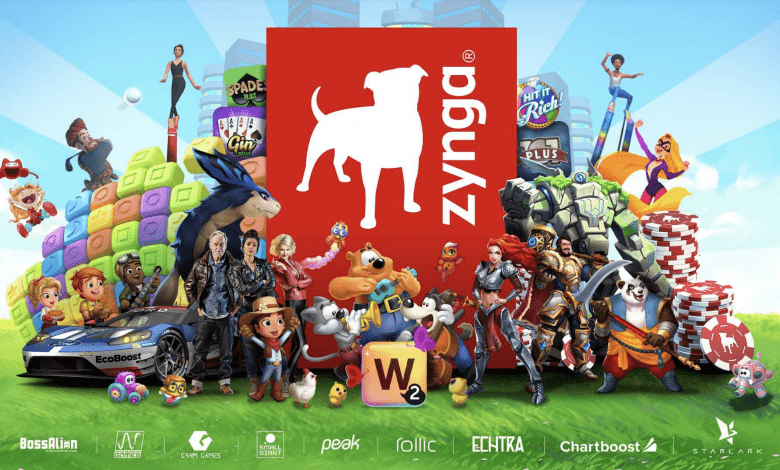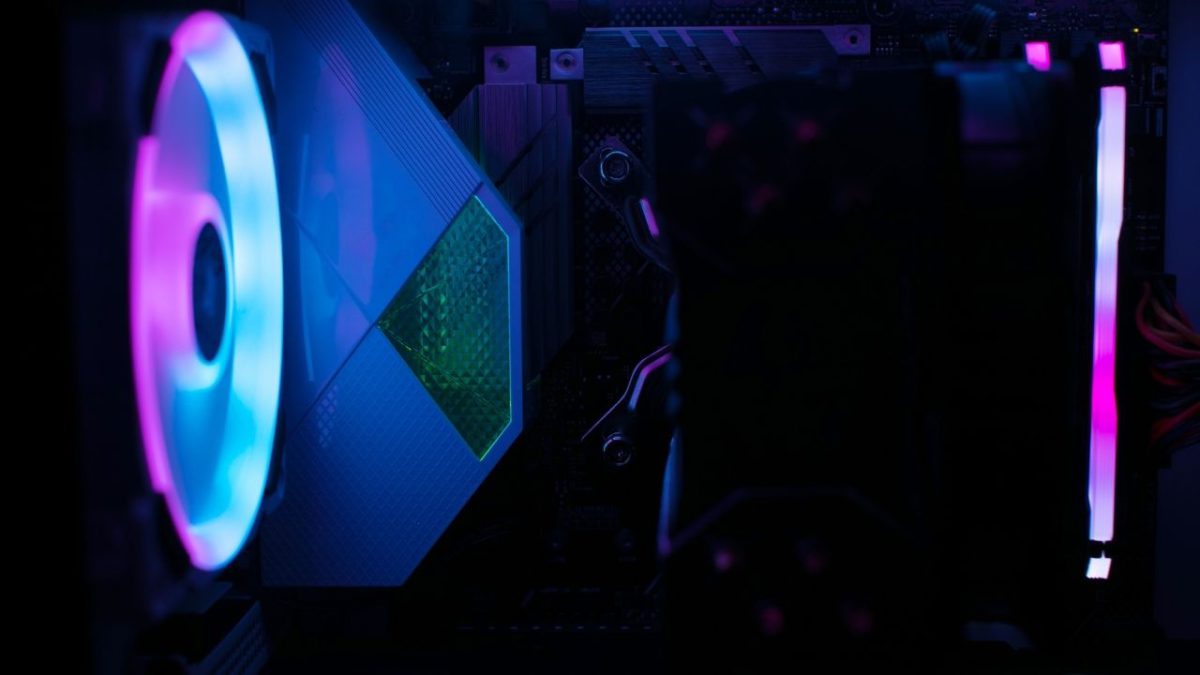Pixels and Profits: AAA vs. Indie Top 10 Intriguing Difference In The Blockchain Gaming Race
The world of gaming is undergoing a seismic shift with the emergence of blockchain technology. This new paradigm promises ownership, transparency, and innovative gameplay experiences. But within this exciting landscape, a competition brews: established AAA studios versus nimble indie developers. Who’s taking the lead in the blockchain gaming race? This article delves into the world of AAA and indie games, exploring their strengths, weaknesses, and how they’re vying for dominance in the blockchain gaming arena.
Understanding AAA Games in the Blockchain Gaming World: A Promising Fusion, Yet Hurdles Remain
The concept of AAA (Triple-A) games entering the blockchain gaming world is a topic that sparks excitement and raises questions. Traditionally, AAA games represent the pinnacle of the gaming industry, boasting high production values, immersive experiences, and blockbuster budgets. Here’s a deep dive into this evolving landscape:
The Allure of AAA Blockchain Games:
-
Enhanced Player Ownership: Blockchain technology introduces the concept of in-game asset ownership. Players could potentially own unique digital items like weapons, skins, or even virtual land within AAA titles, fostering a deeper connection and potentially allowing them to trade or sell these assets.
-
New Revenue Streams: The ability to buy, sell, and trade in-game assets opens doors for new revenue streams. Players could potentially earn cryptocurrency or tokens through gameplay or by trading their digital assets with others, creating a more dynamic in-game economy.
-
Potential for Increased Engagement: The concept of owning and potentially profiting from in-game assets could lead to increased player engagement and a more invested player base. Players might be more likely to spend time and resources within a game if they have a stake in its digital ecosystem.
Challenges and Considerations for AAA Blockchain Games:
-
Technical Hurdles: Current blockchain platforms may not be equipped to handle the high transaction volume and processing power required for large-scale, AAA games. Scalability and transaction speed limitations could create a frustrating user experience for players.
-
Integration with Existing Models: Integrating blockchain mechanics seamlessly into established AAA development and monetization models requires careful planning. Developers need to ensure the play-to-earn aspect complements the core gameplay experience and doesn’t overshadow the traditional aspects players love about AAA titles.
-
Uncertain Regulatory Landscape: The regulatory environment surrounding blockchain gaming and cryptocurrency is still evolving. This uncertainty can pose challenges for developers who may hesitate to invest heavily in a technology with unclear legal parameters.
-
Balancing Playability with Earning Potential: There’s a risk that the focus on earning from in-game assets could overshadow the core gameplay experience. Developers need to strike a balance between allowing players to earn and ensuring the game remains fun and engaging for all players, regardless of their financial goals.
Examples and Potential Pathways:
-
Early Efforts: Several studios are exploring the potential of AAA blockchain games. For instance, studios like Blowfish Studios with their title “Phantom Galaxies” are attempting to create high-quality blockchain games with a focus on cosmetic-only NFTs to avoid “pay-to-win” mechanics.
-
Focus on Interoperability: The creation of interoperable standards could allow players to use their in-game assets across different blockchain games. This would enhance the overall value proposition of digital ownership and encourage wider adoption.
-
Community Building and Trust: Building trust with the gaming community is crucial. Developers need to be transparent about their blockchain implementation and ensure it enhances, rather than detracts, from the traditional AAA gaming experience.
The Future of AAA Blockchain Games
The future of AAA blockchain games remains to be seen. While the potential benefits are undeniable, overcoming technical limitations, regulatory hurdles, and player skepticism are crucial steps. Collaboration between developers, gamers, and blockchain experts will be key to unlocking the full potential of this exciting fusion. As the technology matures and the industry evolves, AAA blockchain games could revolutionize how players interact with and experience their favorite titles. However, careful consideration and a focus on creating a positive player experience will be essential for this technology to gain mainstream adoption within the AAA gaming landscape.
Also, read – Top 15 Things You Should Check Before Investing In Blockchain Gaming
Indie Games: Pioneering the Blockchain Gaming Frontier
Indie games, known for their innovation, creativity, and agility, are at the forefront of the blockchain gaming revolution. Unlike their AAA counterparts, indie developers have the freedom to experiment and embrace new technologies like blockchain, paving the way for exciting possibilities. Here’s a detailed exploration of the unique landscape of indie games in the blockchain gaming world:
Advantages for Indie Developers:
-
Funding and Community Building: Blockchain offers new avenues for indie developers to raise funds. Play-to-earn mechanics and Initial Coin Offerings (ICOs) can provide alternative funding sources beyond traditional publishers. Additionally, blockchain allows for direct engagement with players, fostering stronger communities and gathering valuable feedback throughout the development process.
-
Ownership and Monetization: Indie developers can leverage blockchain to create a more sustainable revenue model. In-game assets like characters, items, or virtual land can be tokenized, allowing players to own them and potentially trade them on secondary markets. This empowers developers to capture a share of the value created within their game ecosystems.
-
Experimentation and Innovation: The open and permissionless nature of blockchain allows indie developers to experiment with innovative game mechanics and economic models. This fosters creativity and the potential to develop entirely new genres and player experiences that wouldn’t be possible within traditional gaming models.
Examples of Indie Blockchain Games:
-
Axie Infinity: This play-to-earn game, where players breed and battle adorable creatures called Axies, has become a phenomenon. Axies are NFTs (non-fungible tokens) that players can own, breed, and trade, demonstrating the potential of blockchain for creating engaging and financially rewarding experiences.
-
The Sandbox: This voxel-based metaverse allows players to create, share, and monetize their own experiences within a virtual world. Land and assets within The Sandbox are NFTs, empowering players and creators to own a piece of the digital landscape.
-
CryptoKitties: This early adopter in the play-to-earn space allowed players to breed and collect unique digital cats. While the hype has subsided, CryptoKitties showcased the potential of blockchain for creating collectible in-game assets with real-world value.
Challenges for Indie Blockchain Games:
-
Technical Hurdles: Developing and maintaining blockchain games can be technically complex, especially for smaller indie studios with limited resources. Navigating blockchain technology and integrating it seamlessly into game design can be a significant challenge.
-
Market Volatility: The value of cryptocurrencies and blockchain assets can be volatile. This can create uncertainty for both developers and players, potentially impacting the long-term sustainability of some indie blockchain games.
-
Player Education and Adoption: The concept of blockchain and play-to-earn mechanics is still relatively new for many gamers. Educating players about the benefits and potential risks is crucial for wider adoption of indie blockchain games.
The Future of Indie Blockchain Games
Indie developers are playing a vital role in shaping the future of blockchain gaming. Their agility and willingness to experiment are crucial for pushing the boundaries of what’s possible. As the technology matures, overcoming technical hurdles and fostering wider player education will be key to mainstream adoption. Indie blockchain games have the potential to become a thriving sector within the gaming industry, offering unique experiences, innovative monetization models, and a deeper connection between players and the games they love. However, collaboration between developers, players, and blockchain experts will be essential to ensure the long-term success and sustainability of this exciting new frontier in gaming.
AAA vs. Indie : Top 10 Differences
The world of gaming is undergoing a seismic shift with the emergence of blockchain technology. While both AAA (Triple-A) studios and indie developers are exploring this new frontier, their approaches and challenges differ significantly. Here’s a deep dive into the top 10 intriguing differences in their blockchain gaming journeys:
1. Development Approach:
-
AAA: Large-scale studios with established development processes may find integrating blockchain mechanics into existing workflows challenging. Careful planning and potential engine modifications might be required.
-
Indie: Smaller studios have more flexibility to experiment and iterate on blockchain integration. This agility allows them to adapt to the evolving technology and player preferences more quickly.
2. Funding and Monetization:
-
AAA: AAA studios typically rely on traditional publisher funding or upfront game sales. Implementing blockchain elements might require adjustments to monetization models to accommodate play-to-earn mechanics or NFT sales.
-
Indie: Indie developers can leverage blockchain for alternative funding sources like Initial Coin Offerings (ICOs) or play-to-earn models. This allows them to bypass traditional funding hurdles and potentially raise capital from a global audience.
3. Risk Tolerance:
-
AAA: Large studios are typically more risk-averse due to the high costs associated with AAA game development. The uncertainty surrounding blockchain regulations and technology might make them hesitant to fully embrace it.
-
Indie: Indie developers are generally more comfortable with taking risks and exploring uncharted territory. Their smaller scale allows them to experiment with blockchain features without jeopardizing significant investments.
4. Target Audience:
-
AAA: AAA games typically target a broad audience, aiming for mass appeal and mainstream success. Integrating blockchain elements needs to be done carefully to avoid alienating players unfamiliar with the technology.
-
Indie: Indie developers often cater to niche audiences or focus on innovative gameplay mechanics. They can target blockchain-enthusiast gamers who are more receptive to new in-game economies and ownership concepts.
5. Development Timelines:
-
AAA: AAA game development cycles can be lengthy, spanning several years. Integrating and testing blockchain features within this timeframe can be challenging.
-
Indie: Indie development cycles are often shorter and more agile. This allows indie studios to adapt to the fast-paced evolution of blockchain technology and player preferences more readily.
6. Marketing and Community Building:
-
AAA: AAA studios have established marketing channels and large communities. Leveraging these existing resources to promote their blockchain games can be advantageous.
-
Indie: Indie developers may need to build their communities from the ground up within the blockchain gaming space. Social media, online forums, and collaboration with blockchain influencers can be crucial for reaching their target audience.
7. Focus on Play vs. Earn:
-
AAA: The core focus of AAA studios is typically on creating engaging and immersive gameplay experiences. Incorporating blockchain elements should complement the core gameplay, not overshadow it.
-
Indie: Some indie developers might prioritize the “play-to-earn” aspect, potentially attracting players motivated by the potential to earn cryptocurrency or tokens through gameplay.
8. Technical Expertise:
-
AAA: AAA studios may require building or acquiring additional technical expertise to develop and integrate blockchain features within their existing engines and infrastructure.
-
Indie: The indie development community is known for its technical prowess and willingness to learn new technologies. This allows them to adapt to blockchain development challenges more readily.
9. Regulatory Considerations:
-
AAA: Large studios have more resources to navigate the evolving regulatory landscape surrounding blockchain gaming. Compliance is crucial to avoid potential legal or financial repercussions.
-
Indie: Indie developers might have limited resources to stay updated on regulations. Collaboration with blockchain experts or legal counsel can help them navigate this complex area.
10. Long-Term Vision:
-
AAA: The long-term vision of AAA studios entering the blockchain gaming space might be to establish sustainable ecosystems with potential for ongoing revenue generation through in-game asset sales or microtransactions.
-
Indie: Indie developers might be driven by a desire to push the boundaries of game design and explore the creative and economic possibilities that blockchain technology offers.
These are just some of the intriguing differences between AAA and indie studios in the blockchain gaming race. Both sectors have the potential to shape the future of gaming. AAA studios bring established franchises, production value, and large communities, while indie developers offer innovation, agility, and a willingness to experiment. As the technology matures and the industry evolves, collaboration and a shared focus on creating exceptional player experiences will be key to unlocking the true potential of blockchain gaming, regardless of budget or development scale.
Blockchain’s Disruptive Potential: A Level Playing Field?
The emergence of blockchain technology presents a unique opportunity for both AAA and indie studios. Here’s how blockchain is impacting the gaming landscape:
- True In-Game Ownership: Players can own unique digital assets within the game, such as characters, items, or virtual land, thanks to blockchain’s tokenization capabilities.
- Play-to-Earn Mechanics: Blockchain allows for rewarding players for their time and investment in the game, fostering a more engaged player base.
- Decentralized Governance: Blockchain can empower players to participate in decision-making processes within the game’s ecosystem.
This new paradigm could potentially level the playing field. Here’s how AAA and indie studios are approaching blockchain gaming:
- AAA Studios: Major studios see blockchain as a way to monetize existing franchises and potentially attract new players with innovative ownership models. However, their traditional development cycles and risk-averse nature might hinder rapid adaptation.
- Indie Developers: Indie studios are embracing the flexibility and experimentation potential of blockchain. They can leverage blockchain to create unique player-driven economies and foster strong community engagement.
Who’s Winning? It’s Still Early Days
The blockchain gaming space is still in its nascent stages, making it difficult to declare a clear winner. Here are some factors to consider:
- Community Building: Studios that successfully build strong communities around their blockchain games will likely thrive.
- Innovation and Experimentation: Studios that embrace the unique opportunities presented by blockchain technology to create novel gameplay experiences will hold an edge.
- Focus on Sustainability: Games with well-designed tokenomics and sustainable economies will attract players seeking long-term value.
Ultimately, the winner of the blockchain gaming race won’t be a single entity, but rather a combination of factors. Studios, both AAA and indie, that can adapt to this evolving landscape, prioritize player experience, and embrace the core tenets of blockchain technology – decentralization, ownership, and transparency – will be the ones shaping the future of gaming.
Conclusion
The emergence of blockchain technology has ignited a new chapter in the gaming industry, with both AAA and indie studios vying for position in this uncharted territory. While their approaches and challenges differ significantly, their combined efforts hold immense potential for shaping the future of gaming.
AAA studios, with their established franchises, production muscle, and vast communities, can leverage blockchain to create immersive and engaging experiences with robust in-game economies. However, successfully integrating blockchain features requires careful planning, navigating technical complexities, and adapting monetization models to ensure a seamless player experience.
Indie developers, on the other hand, bring agility, innovation, and a willingness to take risks. They can be pioneers in exploring the creative and economic possibilities of blockchain, catering to niche audiences or developing entirely new genres. However, overcoming technical hurdles, building communities from the ground up, and staying compliant with evolving regulations are crucial challenges they need to address.
The future of blockchain gaming hinges on a symbiotic relationship between these seemingly disparate forces. AAA studios can learn from the agility and experimentation of indie developers, while indie studios can benefit from the experience, resources, and established communities of AAA giants. Collaboration between these sectors, along with fostering a strong connection with the gaming community, will be key to overcoming challenges and creating a future where blockchain enhances, rather than disrupts, the core principles of fun and engaging gameplay.
Looking ahead, several trends hold promise. The development of interoperable standards could allow players to use their in-game assets across different blockchain games, creating a more unified ecosystem. Additionally, a focus on player ownership and empowerment, rather than just the “play-to-earn” aspect, will be crucial for building trust and long-term engagement. Regulatory clarity and collaboration between governments, developers, and gamers will also be essential for fostering a healthy and sustainable blockchain gaming environment.
Ultimately, the blockchain gaming race is not a competition between AAA and indie studios, but a collaborative journey towards a future where innovative technology complements the art of game design. By leveraging their unique strengths, both sectors can unlock the immense potential of blockchain to create an even more immersive, engaging, and rewarding gaming experience for players worldwide.
Stay informed with daily updates from Blockchain Magazine on Google News. Click here to follow us and mark as favorite: [Blockchain Magazine on Google News].
Get Blockchain Insights In Inbox
Stay ahead of the curve with expert analysis and market updates.
latest from tech
Disclaimer: Any post shared by a third-party agency are sponsored and Blockchain Magazine has no views on any such posts. The views and opinions expressed in this post are those of the clients and do not necessarily reflect the official policy or position of Blockchain Magazine. The information provided in this post is for informational purposes only and should not be considered as financial, investment, or professional advice. Blockchain Magazine does not endorse or promote any specific products, services, or companies mentioned in this posts. Readers are encouraged to conduct their own research and consult with a qualified professional before making any financial decisions. The featured image used is just a creative depiction of the title and it does not intend to hurt sentiments of any person or institution. If it hurts anyone sentiments, please do not hesitate to reach out to Blockchain Magazine.

 Bitcoin
Bitcoin  Ethereum
Ethereum  XRP
XRP  Tether
Tether  Solana
Solana  Dogecoin
Dogecoin  USDC
USDC  Cardano
Cardano  Lido Staked Ether
Lido Staked Ether  TRON
TRON  Chainlink
Chainlink  Avalanche
Avalanche  Sui
Sui  Wrapped stETH
Wrapped stETH  Wrapped Bitcoin
Wrapped Bitcoin  Stellar
Stellar  Toncoin
Toncoin  Hedera
Hedera  Shiba Inu
Shiba Inu  WETH
WETH  Polkadot
Polkadot  LEO Token
LEO Token  Bitcoin Cash
Bitcoin Cash  Litecoin
Litecoin  Bitget Token
Bitget Token  Official Trump
Official Trump  Hyperliquid
Hyperliquid  Uniswap
Uniswap  Pepe
Pepe  Wrapped eETH
Wrapped eETH  USDS
USDS  NEAR Protocol
NEAR Protocol  Ethena USDe
Ethena USDe  Aave
Aave  Aptos
Aptos  Internet Computer
Internet Computer  Ondo
Ondo  WhiteBIT Coin
WhiteBIT Coin  Monero
Monero  Ethereum Classic
Ethereum Classic  Cronos
Cronos  POL (ex-MATIC)
POL (ex-MATIC)  Mantle
Mantle  Render
Render  Dai
Dai  OKB
OKB  Algorand
Algorand  Bittensor
Bittensor 



